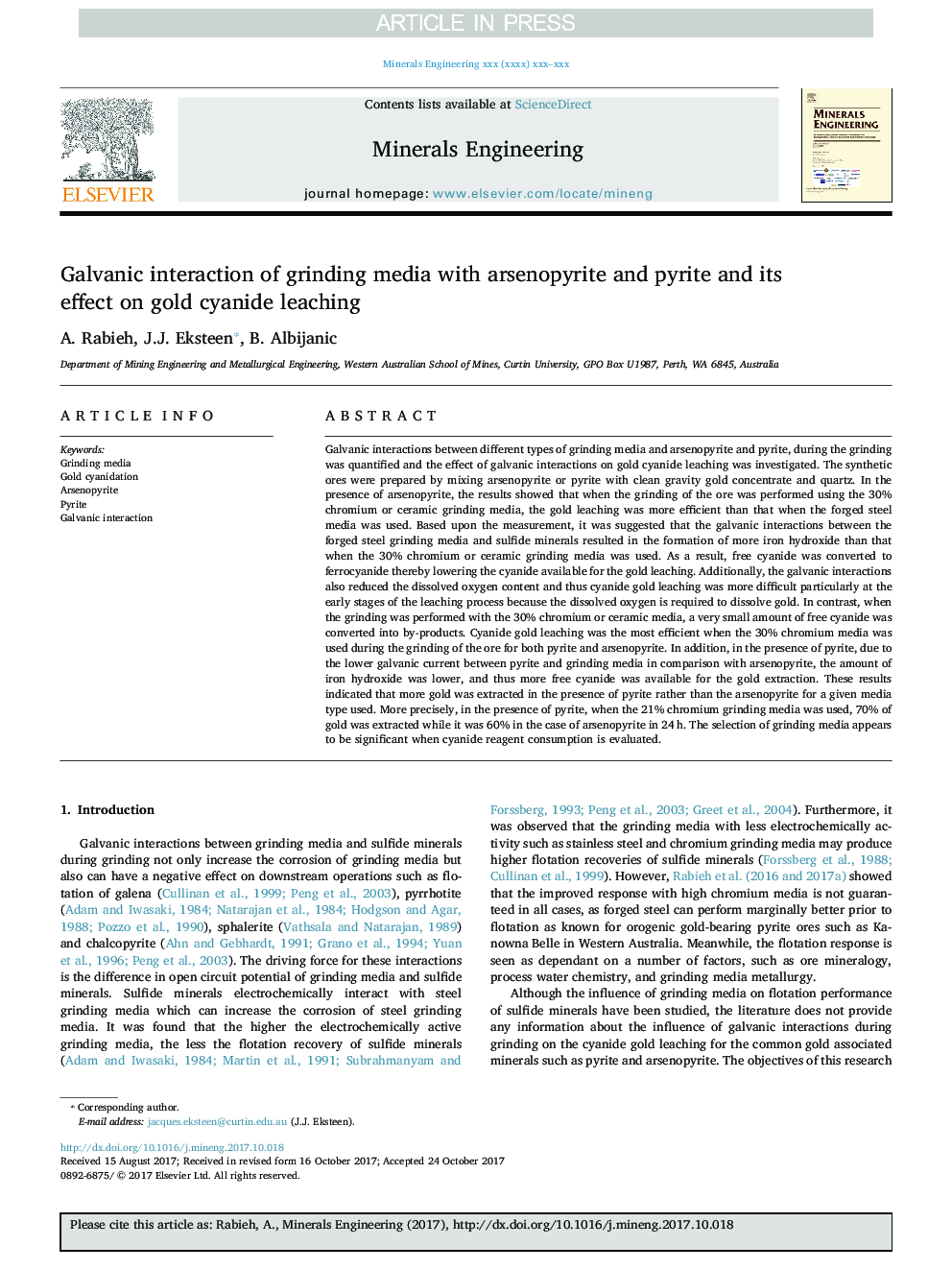| Article ID | Journal | Published Year | Pages | File Type |
|---|---|---|---|---|
| 6672620 | Minerals Engineering | 2018 | 10 Pages |
Abstract
Galvanic interactions between different types of grinding media and arsenopyrite and pyrite, during the grinding was quantified and the effect of galvanic interactions on gold cyanide leaching was investigated. The synthetic ores were prepared by mixing arsenopyrite or pyrite with clean gravity gold concentrate and quartz. In the presence of arsenopyrite, the results showed that when the grinding of the ore was performed using the 30% chromium or ceramic grinding media, the gold leaching was more efficient than that when the forged steel media was used. Based upon the measurement, it was suggested that the galvanic interactions between the forged steel grinding media and sulfide minerals resulted in the formation of more iron hydroxide than that when the 30% chromium or ceramic grinding media was used. As a result, free cyanide was converted to ferrocyanide thereby lowering the cyanide available for the gold leaching. Additionally, the galvanic interactions also reduced the dissolved oxygen content and thus cyanide gold leaching was more difficult particularly at the early stages of the leaching process because the dissolved oxygen is required to dissolve gold. In contrast, when the grinding was performed with the 30% chromium or ceramic media, a very small amount of free cyanide was converted into by-products. Cyanide gold leaching was the most efficient when the 30% chromium media was used during the grinding of the ore for both pyrite and arsenopyrite. In addition, in the presence of pyrite, due to the lower galvanic current between pyrite and grinding media in comparison with arsenopyrite, the amount of iron hydroxide was lower, and thus more free cyanide was available for the gold extraction. These results indicated that more gold was extracted in the presence of pyrite rather than the arsenopyrite for a given media type used. More precisely, in the presence of pyrite, when the 21% chromium grinding media was used, 70% of gold was extracted while it was 60% in the case of arsenopyrite in 24â¯h. The selection of grinding media appears to be significant when cyanide reagent consumption is evaluated.
Related Topics
Physical Sciences and Engineering
Chemical Engineering
Chemical Engineering (General)
Authors
A. Rabieh, J.J. Eksteen, B. Albijanic,
